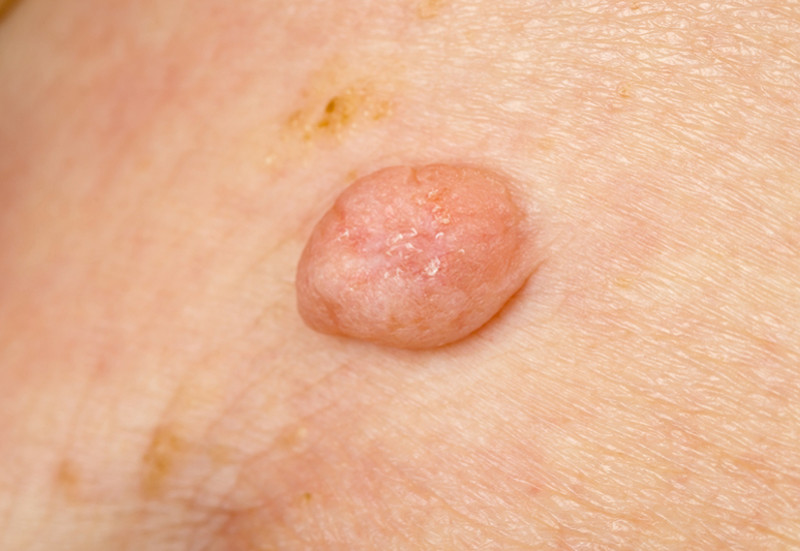
Skin and soft tissue mass
Skin and soft tissue masses, also known as tumors or lumps, can be a concerning issue for many individuals. This type of tumor can emerge nearly anywhere in the body, but are most commonly found on the skin and in the subcutaneous tissue. Often, these initially present as lumps or bumps. There are three distinct categories of skin or soft tissue masses:
- Benign soft tissue tumors or non-cancerous lesions.
- Intermediate lesions that can grow and invade nearby tissues and organs, but usually do not spread to other parts of the body.
- Malignant cancers that can spread to distant locations and organs
Benign lesions are more common and more likely to be painful to the touch. They are generally round in shape, can feel firm or soft to the touch, and tend to grow slowly.
It’s important to note that, in some cases, a skin and soft tissue mass may not be harmful, but it’s always better to be sure and have it examined, especially if you have any concerns or the tumor grows or changes in any way.
Causes of Skin and Soft Tissue Mass
Causes of skin and soft tissue masses can vary greatly. Some are benign, such as lipomas or sebaceous cysts, while others may be malignant, such as squamous cell carcinoma or melanoma. According to the American Cancer Society, factors that can increase the risk of developing a skin and soft tissue mass include prolonged sun exposure, a family history of skin cancer, and certain inherited genetic conditions.
Symptoms of Skin and Soft Tissue Mass
Symptoms of skin and soft tissue masses may include a visible lump or bump on the skin, changes in the color or texture of the surrounding skin, and in some cases, pain or discomfort. These symptoms can vary depending on the type of mass and its location on the body.
Diagnosis of Skin and Soft Tissue Mass
The diagnosis of a skin and soft tissue mass typically begins with a physical examination by a doctor. During this examination, the doctor will inspect the mass – noting its size, shape, color, and any other relevant characteristics. They will also perform a palpation of the mass to assess for any pain or discomfort.
In addition to the physical examination, a biopsy may be performed to determine the type of mass and whether it is benign or malignant. A biopsy is a procedure in which a small sample of tissue is removed from the mass and examined under a microscope. There are different types of biopsies, such as incisional, excisional, and punch biopsies. Incisional biopsy is where a small part of the mass is taken, while excisional biopsy is where the entire mass is removed. Punch biopsy is where a small circular incision is made in the mass to remove a small part of it.
Imaging tests, such as X-rays, CT scans, and MRI (magnetic resonance imaging), may also be used to evaluate the mass. These tests can provide detailed images of the mass and surrounding tissue, which can help the proctologist determine the size, location, and extent of the mass.
At RS Surgical MD, our doctors are equipped with the latest diagnostic tools and technology to accurately diagnose skin and soft tissue masses. They will work closely with our patients to ensure that the appropriate tests are performed and that the results are interpreted correctly. Once a diagnosis is made, our doctors will discuss treatment options and any potential risks or complications.
How can Skin and Soft Tissue Masses be Prevented?
Prevention of skin and soft tissue masses is primarily focused on reducing the risk of developing skin cancer in general. This can be done by limiting sun exposure, using sunscreen, and regular skin checks by your specialist doctor. In addition, individuals with a family history of skin cancer or certain genetic conditions should be especially vigilant about monitoring their skin for any changes.
Costs associated with removal of skin and soft tissue
The cost of treating a skin and soft tissue mass can vary depending on the type and stage of the mass, as well as the treatment options chosen. Insurance coverage and government-funded programs are often available to help cover the cost of treatment. Our team at RS Surgical MD will work closely with our patients to provide them with a detailed cost estimate and will help them navigate any financial assistance options that may be available.
Treatment and Recovery
Treatment options for skin and soft tissue masses vary depending on the type and stage of the mass. Benign masses may be treated with simple removal or excision, while malignant masses may require more extensive treatment, such as radiation or chemotherapy. Our doctors at RS Surgical MD will work closely with our patients to develop a personalized treatment plan that best suits their individual needs.
Our surgeons expertly evaluate and treat any such symptomatic or concerning lesions. We then recommend either observation, biopsy, or excision as needed or desired. These lesions can often be surgically removed comfortably and conveniently in our office with the aid of some local anesthetic. Recovery is usually about a week but it can take 3 to 4 weeks from complete healing.
At RS Surgical MD, our doctors are dedicated to providing the highest level of care for our patients. If you are experiencing symptoms of a skin and soft tissue mass, or have any concerns about a lump or bump on your skin, please contact us to schedule an appointment with one of our experienced doctors. We will work closely with you to provide accurate diagnoses and effective treatment options for your individual needs.

